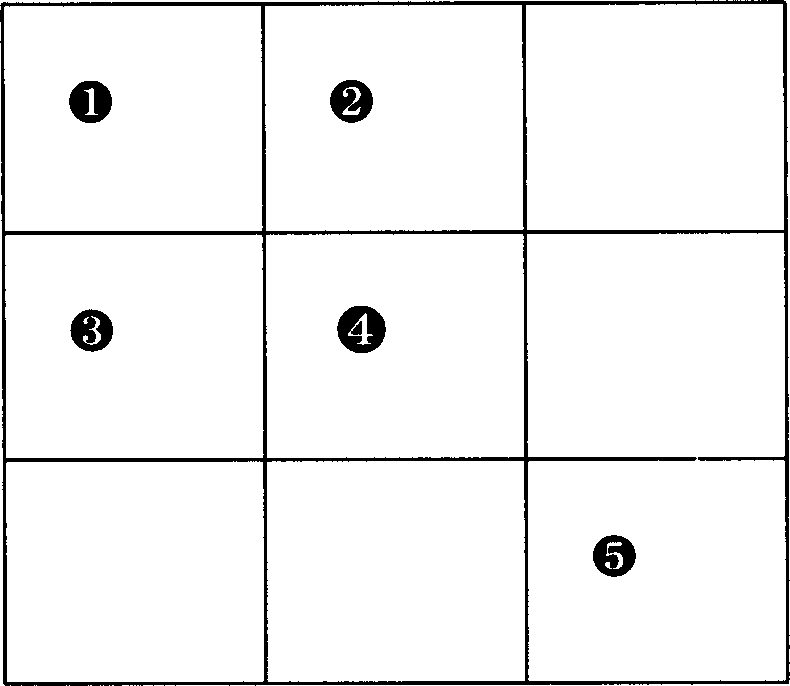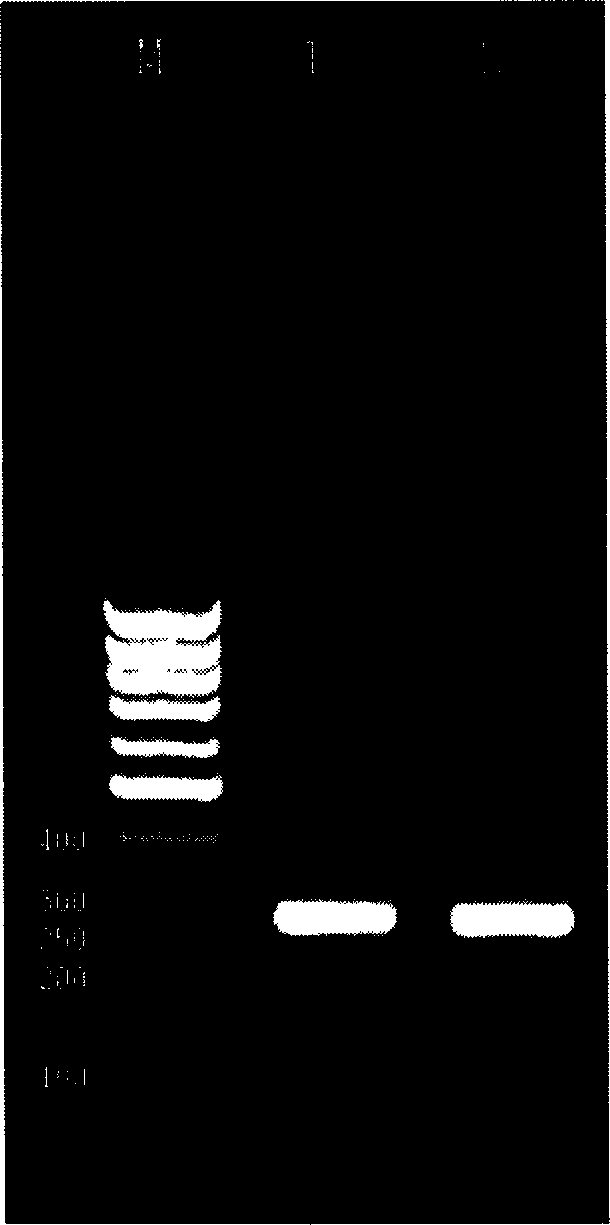Method of detecting apolipoprotein E gene type and kit
A technology of apolipoprotein and genotype, which is applied in the direction of biochemical equipment and methods, microbiological determination/inspection, etc., can solve the problems of high cost, insufficient resolution, complicated technology, etc., and achieve good detection stability and accurate and reliable results Effect
- Summary
- Abstract
- Description
- Claims
- Application Information
AI Technical Summary
Problems solved by technology
Method used
Image
Examples
Embodiment 1
[0079] Embodiment 1: Preparation of sample target nucleic acid
[0080] Draw 1ml of the subject's venous blood with a sterile syringe, add it to an anticoagulant tube containing EDTA, and store it at room temperature or at low temperature. Take 300 μl of anticoagulated whole blood and add it to a 1.5ml centrifuge tube, add 1ml of sterilized pure water to the centrifuge tube, mix well, and let stand at room temperature for 2-4 minutes. Then centrifuge (5000 rpm) for 6 minutes to collect the precipitate. After repeating the above steps once, add 1ml of normal saline to the centrifuge tube and mix well, centrifuge at 10000rpm for 10 minutes, and collect the white precipitate at the bottom of the tube. Add 50 μl of DNA extraction solution to the precipitate, mix thoroughly, bathe in boiling water for 10 minutes and centrifuge at 12000 rpm for 10 minutes. Take 2 μl of the supernatant as a template for the PCR reaction.
Embodiment 2
[0081] Embodiment 2: PCR amplification of target nucleic acid
[0082] Take several tubes of PCR reaction solution for one person, add 1 μl UDG enzyme to each tube, and then directly add 2 μl template (or negative and positive standards), mix well, and centrifuge instantaneously (3 seconds), and put each reaction tube into the PCR reaction tube. After pretreatment at 50°C for 3 minutes, hot start combined with "drop-down PCR" was used to amplify according to the following conditions: 94°C for 4 minutes, 80°C for 3 minutes, during which 1 μl of Taq enzyme was added. Denaturation at 94°C for 2 minutes, followed by 94°C for 1 minute, 70°C for 1 minute, 72°C for 1 minute, a total of 5 cycles, and then 94°C for 1 minute, 64°C for 1 minute, 72°C for 1 minute, a total of 30 cycles, A final 72°C extension was performed for 7 minutes. The amplified products were detected by 2% agarose gel electrophoresis (see attached figure 2 ).
Embodiment 3
[0083] Example 3: Sample reverse dot blot detection of six known genotypes
[0084] Before hybridization, hybridization solution I (2×SSC-0.1% SDS) was mixed with hybridization solution II and preheated to 59°C for use. According to the number of samples to be tested, take six 1.5ml centrifuge tubes, add 0.5ml hybridization solution I to each tube and preheat to 59°C. After the PCR amplification product was denatured at 97°C for 5 minutes, it was placed in an ice-water mixture for 2-5 minutes. Then take 1000 μl hybridization solution I+2 μl solution I (1000:2) mixed solution as the binding solution and store it at 4°C for later use, and take the mixture of solution II: solution III: solution IV (1900:200:1) (19ml solution II+2ml Solution III + 10 μl solution IV) was used as a chromogenic solution protected from light for later use.
[0085] Before hybridization, fill the reaction chamber with distilled water, place the metal perforated plate, and turn on the water pump to dr...
PUM
 Login to View More
Login to View More Abstract
Description
Claims
Application Information
 Login to View More
Login to View More - R&D
- Intellectual Property
- Life Sciences
- Materials
- Tech Scout
- Unparalleled Data Quality
- Higher Quality Content
- 60% Fewer Hallucinations
Browse by: Latest US Patents, China's latest patents, Technical Efficacy Thesaurus, Application Domain, Technology Topic, Popular Technical Reports.
© 2025 PatSnap. All rights reserved.Legal|Privacy policy|Modern Slavery Act Transparency Statement|Sitemap|About US| Contact US: help@patsnap.com



